Few sights in nature’s vibrant tapestry can compare to the attraction of dark purple flowers. These mesmerizing blooms arouse curiosity and capture the eye with their enigmatic charm.
Dark purple flowers are diverse in form and scent, ranging from the delicate petals of the crocus to the majestic depths of the iris family.
These flowers, with their majestic beauty and ageless charm, capture attention and inspire admiration, whether they are used to embellish garden beds or floral arrangements.
Different Types of Dark Purple Flowers
Larkspur (Delphinium)
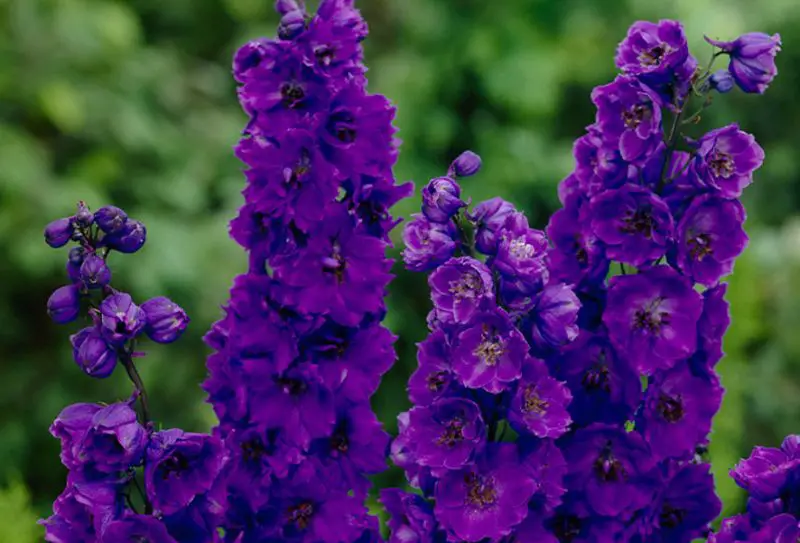
Larkspur, belonging to the genus Delphinium, is a perennial flowering plant characterized by its inflorescence of many flowers. Each small flower features about five petal-like sepals, forming a hollow pocket with a spur at the end. Among these sepals lie four true petals, often mirroring the color of the sepals.
Larkspur, which blooms from early summer to fall, gives gardens a sense of refinement with its delicate blossoms and complex floral structure. Its presence enhances outdoor areas, adding charm and beauty all summer long.
Granny’s nightcap (Aquilegia vulgaris)
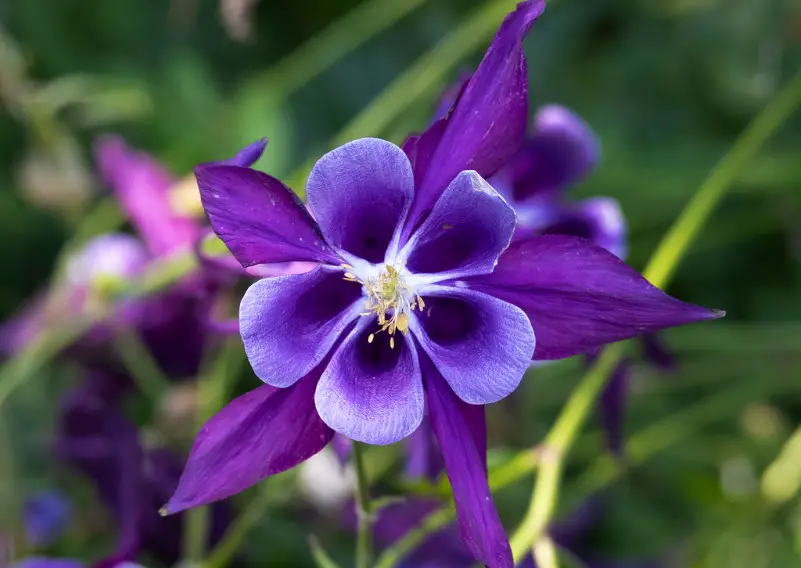
Originally from Europe, Granny’s Nightcap, also called Granny’s Bonnet, is a herbaceous perennial. In early June, gardens are graced with pendants and horizontal blossoms, embellished with hooked spurs. Numerous hybrids have become well-liked garden flowers over time.
It’s crucial to remember that if consumed, every part of the bloom is toxic. Granny’s Nightcap is still a popular addition to gardens despite its toxicity because of its distinctive blossoms and rich leaves, which exude charm and elegance.
Dendrobium Orchid
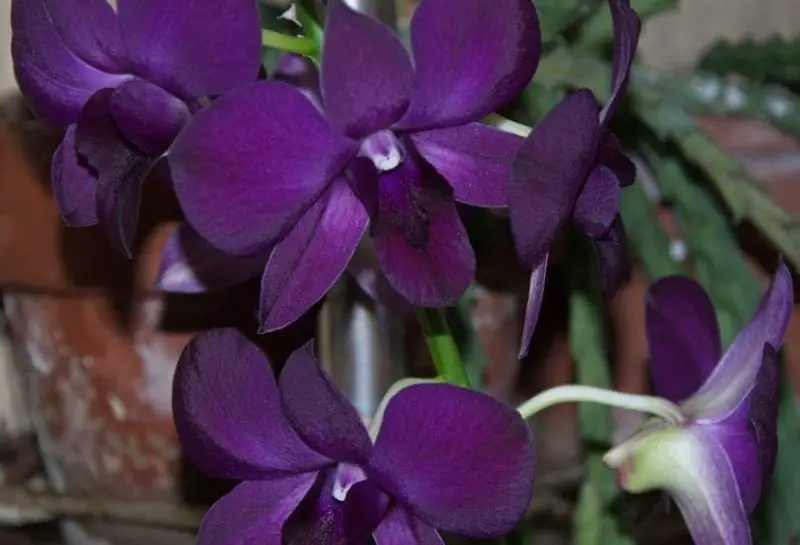
There are about a thousand species of Dendrobium orchids in its genus, most of which are found in East, South, and Southeast Asia. Typically, these graceful orchids bloom in the summer and are dormant throughout the winter.
Dendrobium orchids are fascinating because of their wide variety of species, gorgeous flowers, and varied growth patterns. These orchids, which are grown all over the world, are exquisite additions to homes, gardens, and floral displays.
Pasque flower
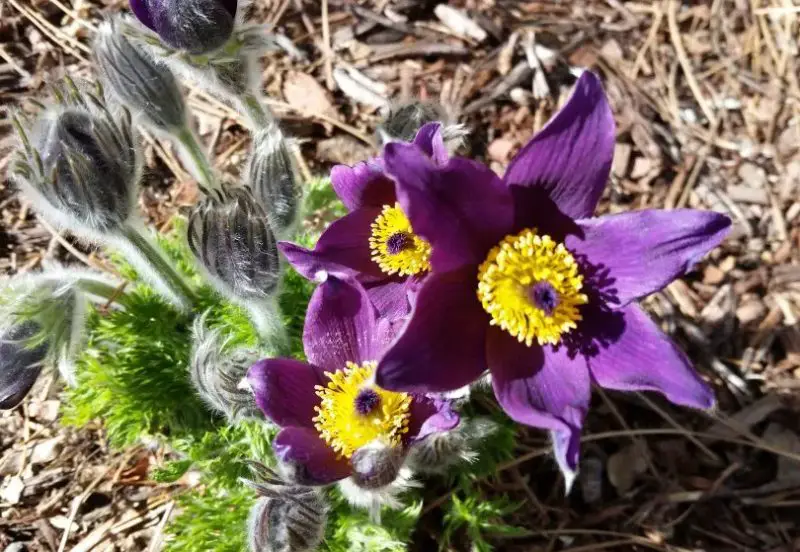
The Pasque flower, sometimes called the Easter flower, wind flower, or prairie crocus, gets its name from its early spring bloom, which occurs right before Easter. Grown for its single bell-shaped flowers and finely divided leaves, it is prized as an ornamental plant.
Thriving in sunny, drought-resistant conditions, the Pasque flower offers both beauty and resilience to gardens. Additionally, it holds medicinal properties, adding to its allure and usefulness beyond its ornamental value.
Persian Buttercup
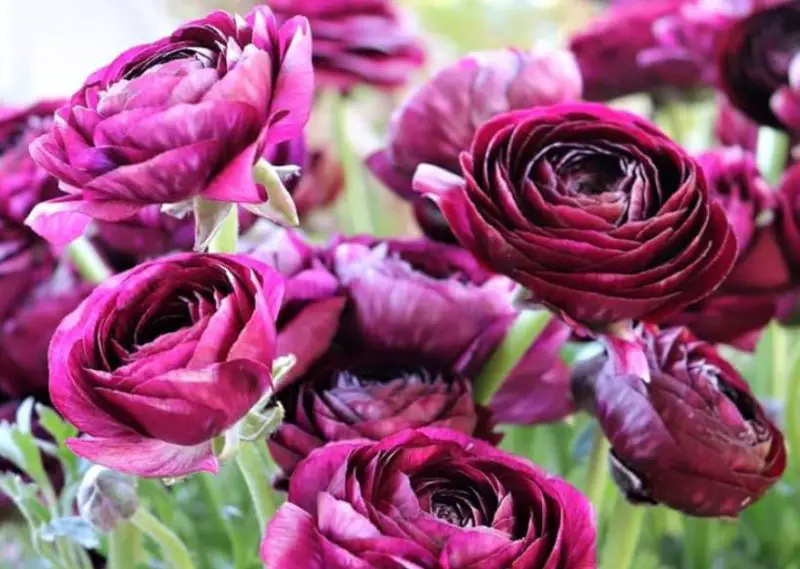
The renowned, beautiful plant known as Persian Buttercup is a herbaceous perennial native to the eastern Mediterranean region and is often utilized in floristry. From spring into early summer, gardens and floral arrangements are adorned with its vivid blooms.
Persian Buttercups usually grow best in full sun, although in warmer climates, they could prefer some partial shade. These flowers enchant admirers with their bright hues and delicate petals, adding a touch of refinement to any bouquet or garden with their beauty and adaptability.
Crocus
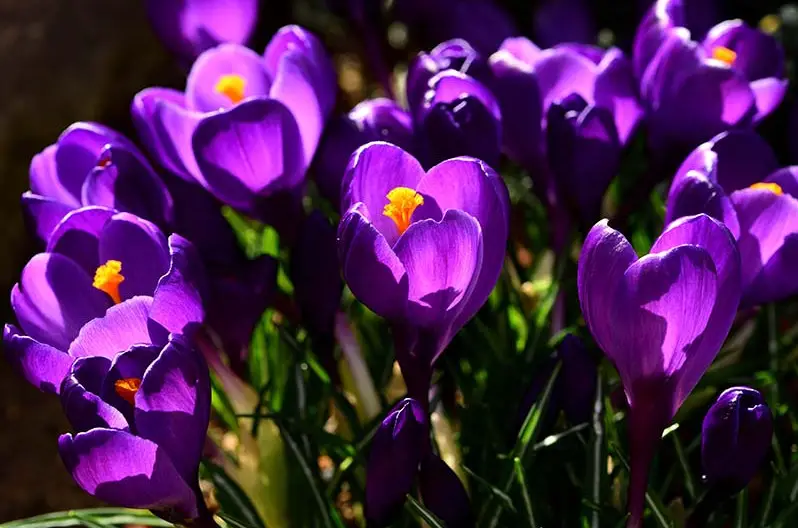
Autumn, winter, and spring are the blooming seasons for crocuses, which are perennial flowers of the iris family. Their single, cup-shaped flowers taper into a tight tube. Although crocus comes in a variety of varieties, some are more famous than others. One such species is Crocus sativus, which yields the pricey spice saffron from its stigmas. Crocuses are a diverse range of colors, even going as far as dark purple.
Lisianthus (Eustoma)
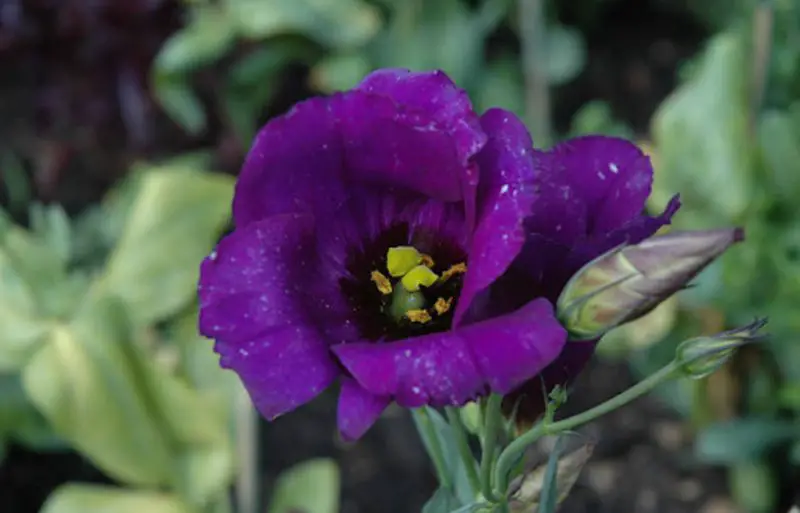
Lisianthus, often known as prairie gentian, has roots in the colorful landscapes of South America, the Caribbean, Mexico, and the United States. This flower adorns landscapes with its graceful beauty. It can produce single or double blooms, each with a big funnel-shaped pattern on stout stalks.
These flowers blossomed from the first signs of summer, adding beauty to areas. Lisianthus flowers are not only beautiful to look at in the yard, but they also demonstrate how long-lasting they are when cut, adding a pop of color to interior areas that can last up to three weeks.
Calla lily

Admirers are captivated by the exotic appeal that emanates from the Calla Lily, especially with its sensual and elegant trumpet-shaped bloom. It has decorated innumerable weddings and festivities over the years, serving as a symbol of fresh starts and changes.
It is a hardy perennial that may be grown both indoors and outdoors because it can tolerate both full and partial sun. The Calla Lily is a well-liked option for floral arrangements. From late spring to mid-summer, it gracefully adorns bouquets, lending refinement to any event.
Verbena
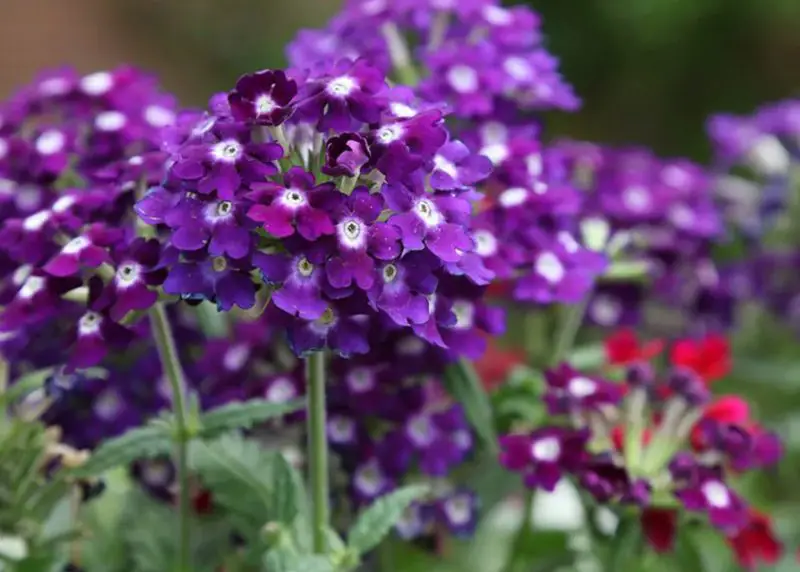
One of the most adaptable plants in the garden, verbena comes in over 250 different varieties and can grow as an annual or perennial. It grows best in the summertime and is native to both Asia and America. Clusters of exquisite purple blossoms it produces decorate landscapes.
Beyond its aesthetic appeal, verbena has medical qualities that allow it to be used for a variety of purposes. It also has a pleasant scent. Its little flowers lend a sense of natural elegance to any setting and are ideal for bouquets. Verbena enhances aesthetics and wellness in equal measure, from gardens to herbal medicines and beyond.
China aster (Callistephus)
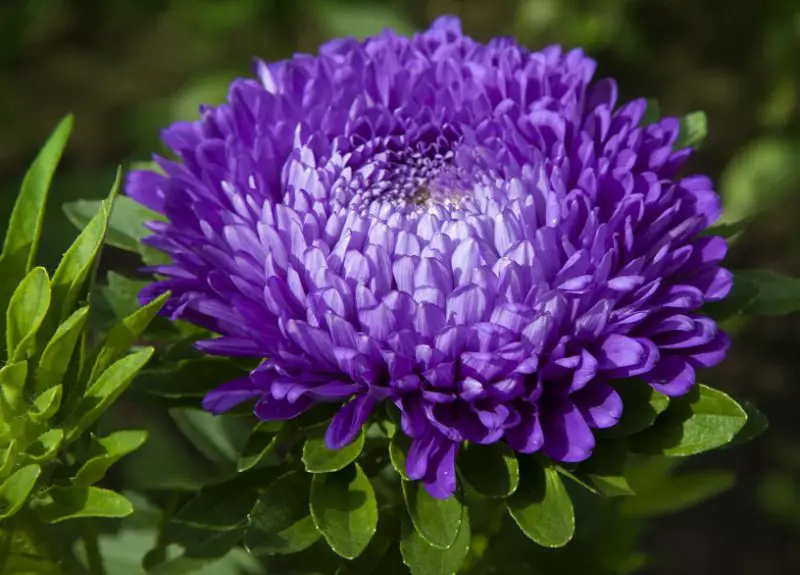
Calistephus, or China aster, is a fascinating biennial or annual herb native to China and Korea. Grateful for its decorative elegance, it adorns gardens across the globe today.
Known as the annual aster, its blooms are quite similar to chrysanthemums; they have bright colors, long, fluffy petals, and a yellow core. These flowers blossom as summer approaches, bringing a splash of color and charm to landscapes.
The China aster never fails to enchant garden enthusiasts and admirers alike with its captivating beauty.
Clematis

The beautiful and adaptable clematis plant can be grown as a fragile evergreen vine, shrub, or perennial. Depending on the variety grown, its blooms, which vary in time and beauty, adorn gardens in the spring, summer, or fall.
The variety of flower displays that the clematis offers, from big to small, single to double blossoms, are breathtaking. Not only do many types thrive in broad sun, but they also do well in moderate shade, demonstrating their flexibility.
Clematis gives a touch of elegance and charm to any scene, captivating admirers with its beauty and adaptability, whether it is gracing trellises, fences, or garden beds.
Purple primrose (Primula vulgaris)
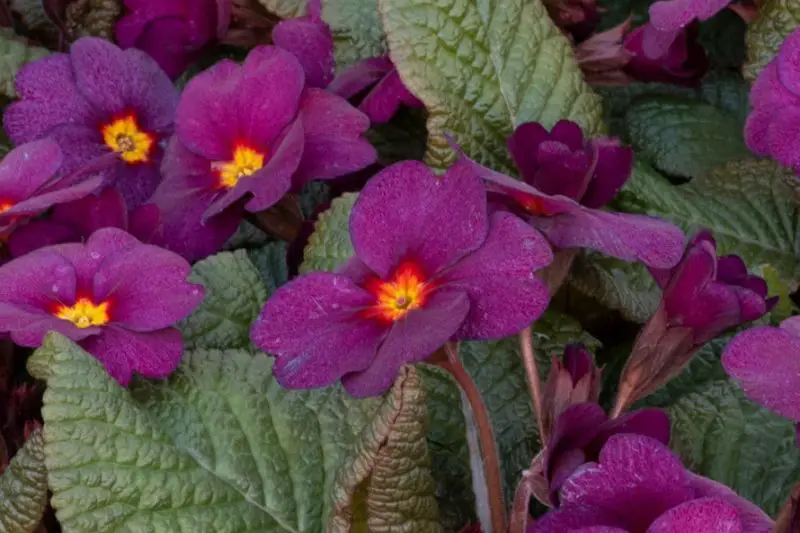
The purple primrose, scientifically known as Primula vulgaris, graces gardens as a herbaceous flowering plant cultivated for its ornamental beauty. Originating from regions including Ethiopia, the Himalayas, Indonesia, and South America, it brings a touch of exotic to diverse landscapes.
Its globe-shaped umbels bloom in early spring and into summer, with mesmerizing grandeur. Rich purple petals with a bright yellow core make for a visually arresting contrast that enlivens any garden scene and offers a pop of color.
Bellflower
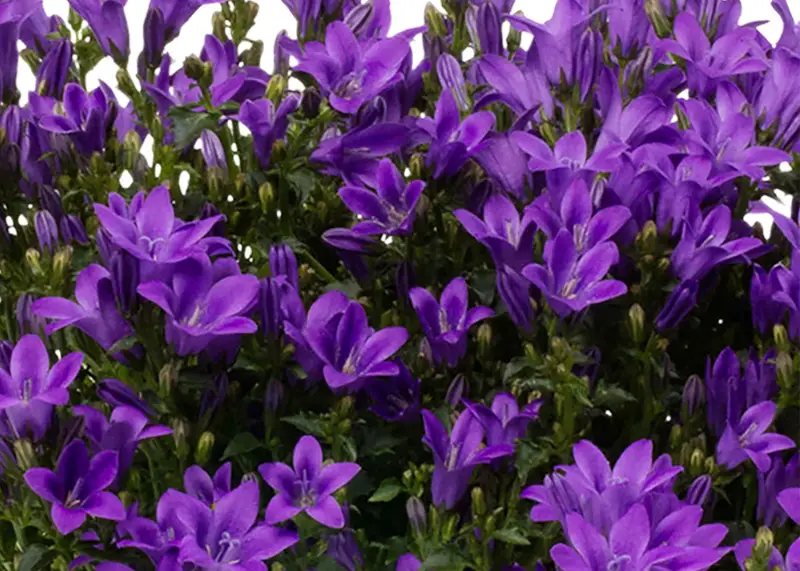
Members of the Campanula family, bellflowers are well-known for their lovely cup-shaped flowers. They give gardeners a wide range of options, with types spanning from biennials to annuals.
Their exquisite bell-like blossoms, which nod gracefully, adorn gardens from late spring well into summer. Bellflowers are hardy plants that grow well in stony soil, producing an abundance of lush ground cover.
Watering them on a regular basis will ensure that they grow to their full potential and produce colorful blooms that will add a whimsical touch to any garden setting.
Dwarf Iris
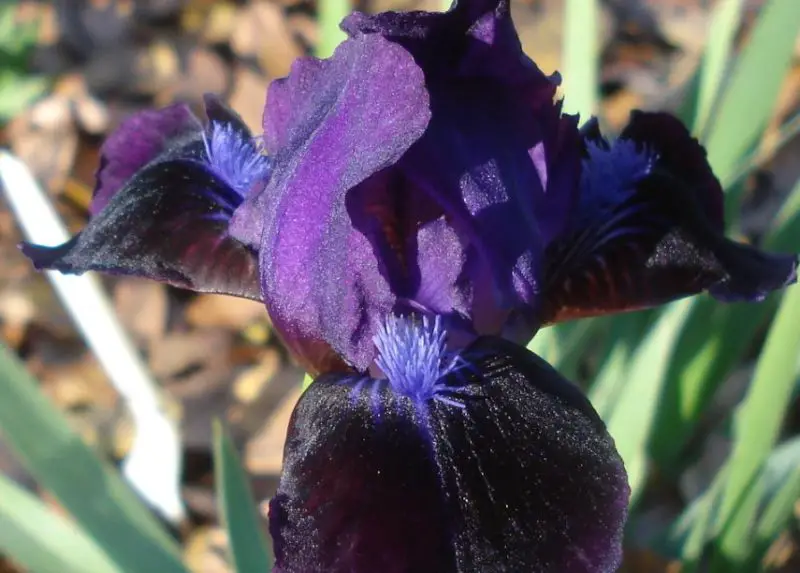
Early spring to early summer is when the dwarf iris, a tiny replica of its larger sibling, impresses gardens with its splendor. These fragrant, beautiful flowers have rich, black petals that contrast sharply with a bright yellow core.
Their vivid blooms lend a touch of elegance to any landscape, held on slender stems that can reach heights of 2 to 12 inches. As perennials, dwarf iris plants grow well in both full and partial sun, which makes them a wonderful and adaptable addition to garden beds.
Sweet Pea (lathyrus odoratus)
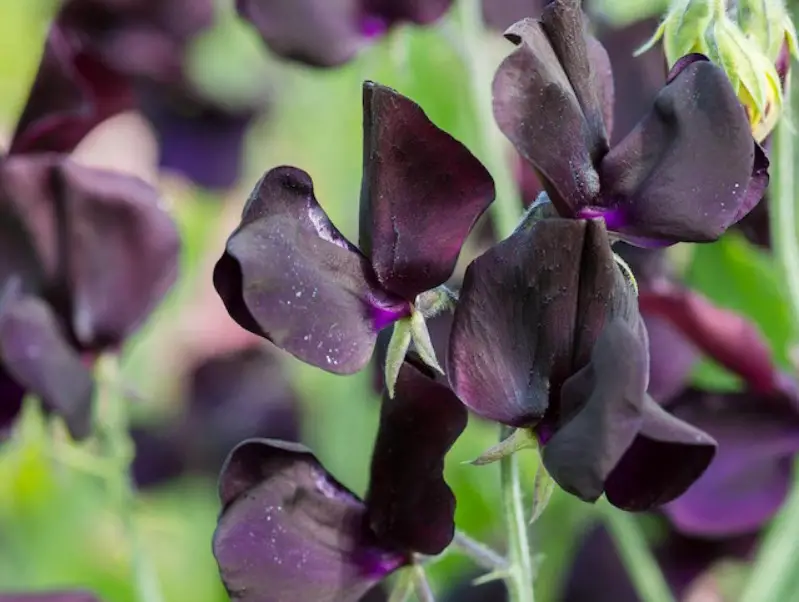
Native to Cyrus, southern Italy, Sicily, and the Aegean Islands, the sweet pea (Lathyrus odoratus) is an annual climber plant. Cultivated species have a range of colors, while wild varieties have dark purple flowers. Prized in perfumery, these blooms are known for their delicate aroma.
Flowering during summer and early fall, Sweet Peas thrive in full sun exposure. With their delicate beauty and enchanting scent, they bring joy to gardens and bouquets, adding a touch of elegance to any space.
Zinnia
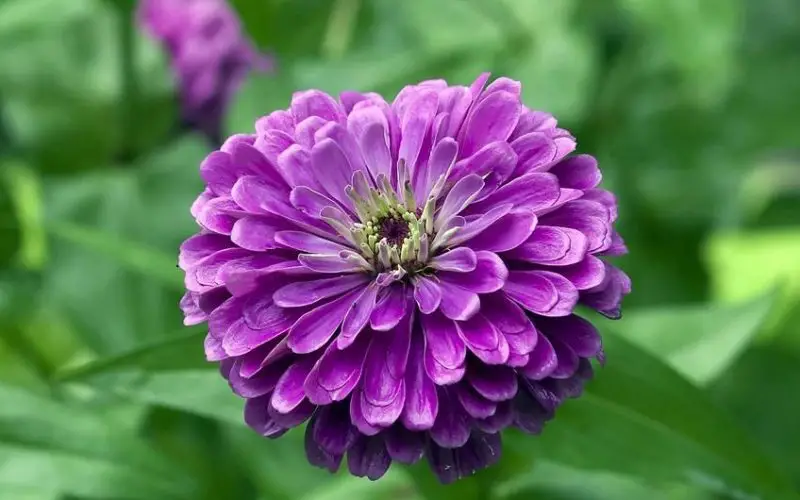
In the same family as sunflowers and daisies, zinnias are shrubs, annuals, and sub-shrubs that are indigenous to both North and South America. Some species have flowers in the shape of domes, but their blooms are characterized by a single row of petals with eye-catching discs of black and yellow. Throughout the summer and fall, gardens are adorned with these vivid flowers.
Zinnias thrive in full sun and give a vibrant splash of color to any landscape. Their varied shapes and vibrant colors captivate onlookers.
Petunia
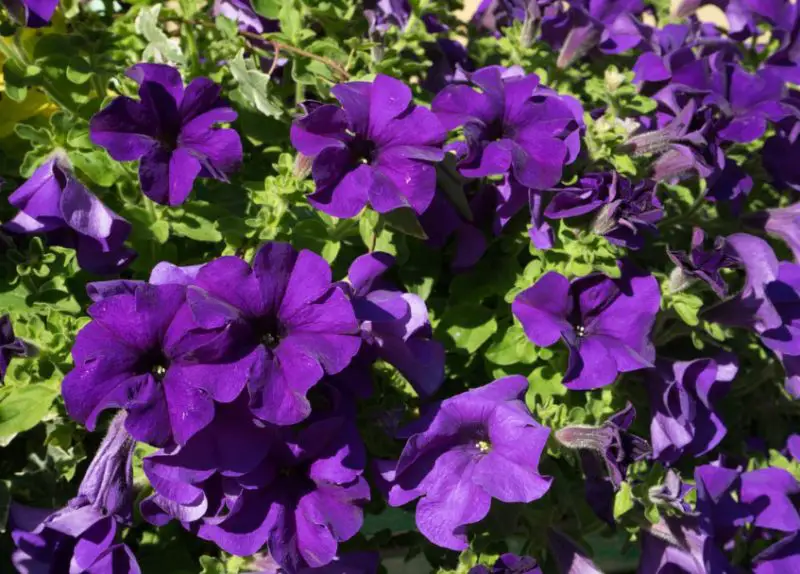
Given as a gift, the native South American petunia flower has many symbolic meanings. It represents coziness and compatibility, signifying that the giver is comfortable with you. But in some situations, it could represent bitterness or rage.
Conventional types have purple and white flowers, and the funnel-shaped originals gave rise to a number of hybrids with single and double petals. Petunias bloom in the summer and fall and are frequently planted in hanging baskets because they are vulnerable to wind and frost.
Spanish Lavender
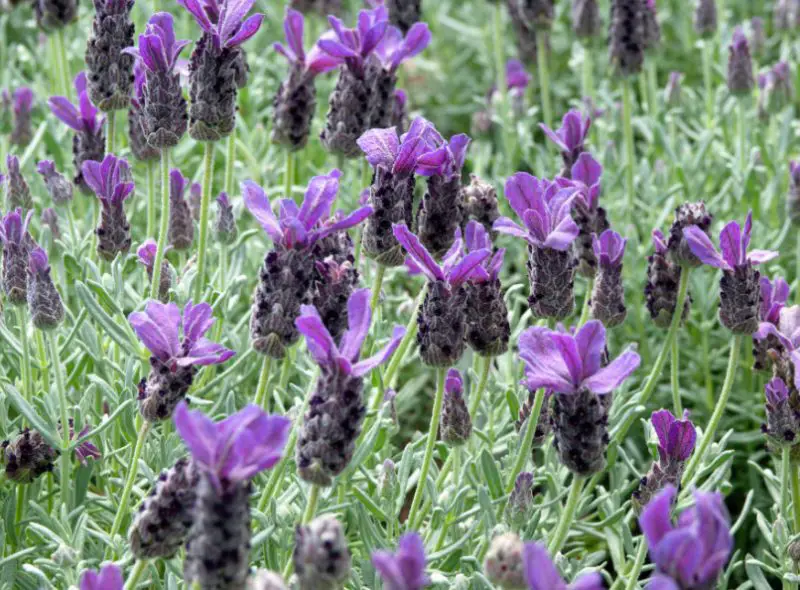
Northern Africa and the Mediterranean are the native regions of Spanish lavender, sometimes referred to as French lavender or Butterfly lavender. Its unique, dark purple flowers have upright petals at the tips and are formed like pinecones. It brings a brilliant burst of color to gardens and blooms constantly from mid-spring to late summer.
Spanish lavender is highly valued for its silver leaves, which is highly scented and frequently utilized in the creation of essential oils, in addition to its aesthetic value. In addition to adding beauty to gardens, this adaptable plant serves as a fragrant source for a variety of herbal goods.
Cherry pie flower
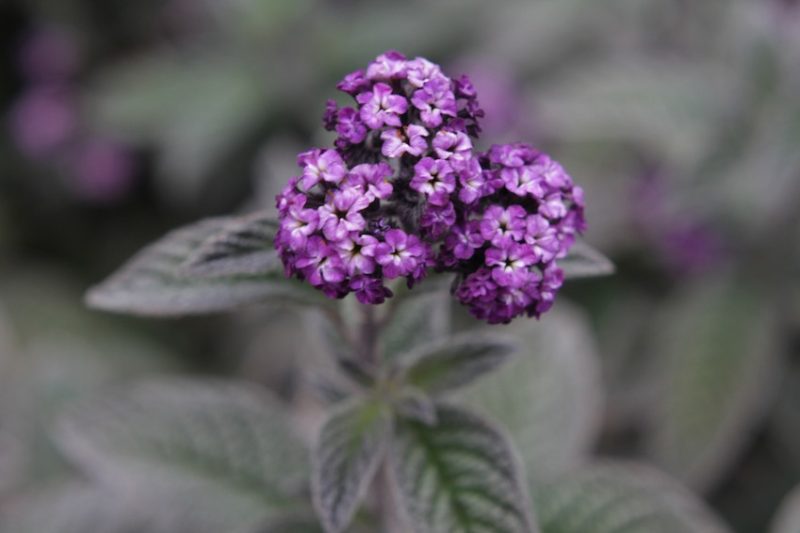
Hardy perennials native to Peru, cherry pie flowers enchant the senses with their powerful vanilla-like scent. This plant blooms in the summer and fall and grows well in both full and partial sunlight. Its small, magnificent clusters of fragrant, delicate purple blooms give a charming beauty to any garden.
It’s important to remember that this flower’s seeds are toxic to horses, so exercise caution in situations where horses are present.
Sword lily
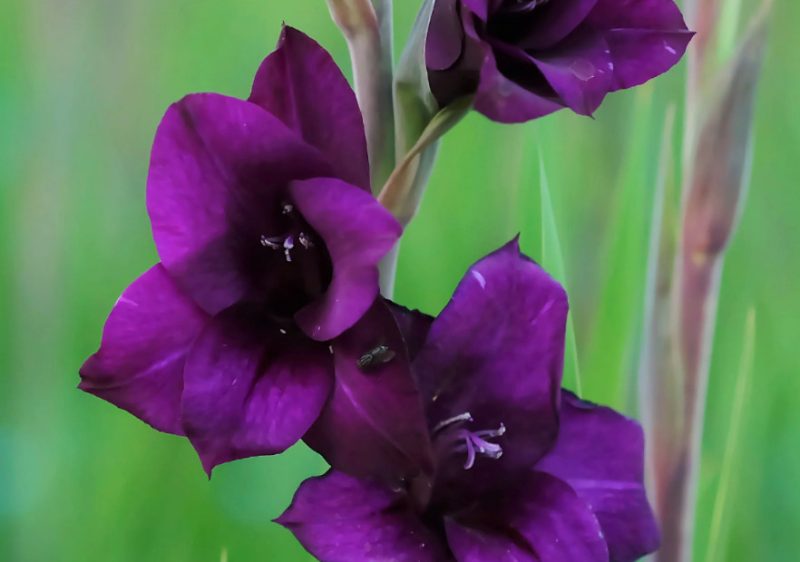
The Sword Lily is a perennial plant that grows native to Asia, the Mediterranean, South Africa, and Tropical Africa. Its blooms can be seen in gardens from early summer to mid-fall. One or more flowers may be present in its inflorescence, creating a breathtaking display of shape and color.
Cultivars cultivated especially for commercial use have been developed over the years as a result of hybridization, offering a wide variety of colors, sizes, and patterns to please both gardeners and aficionados.






